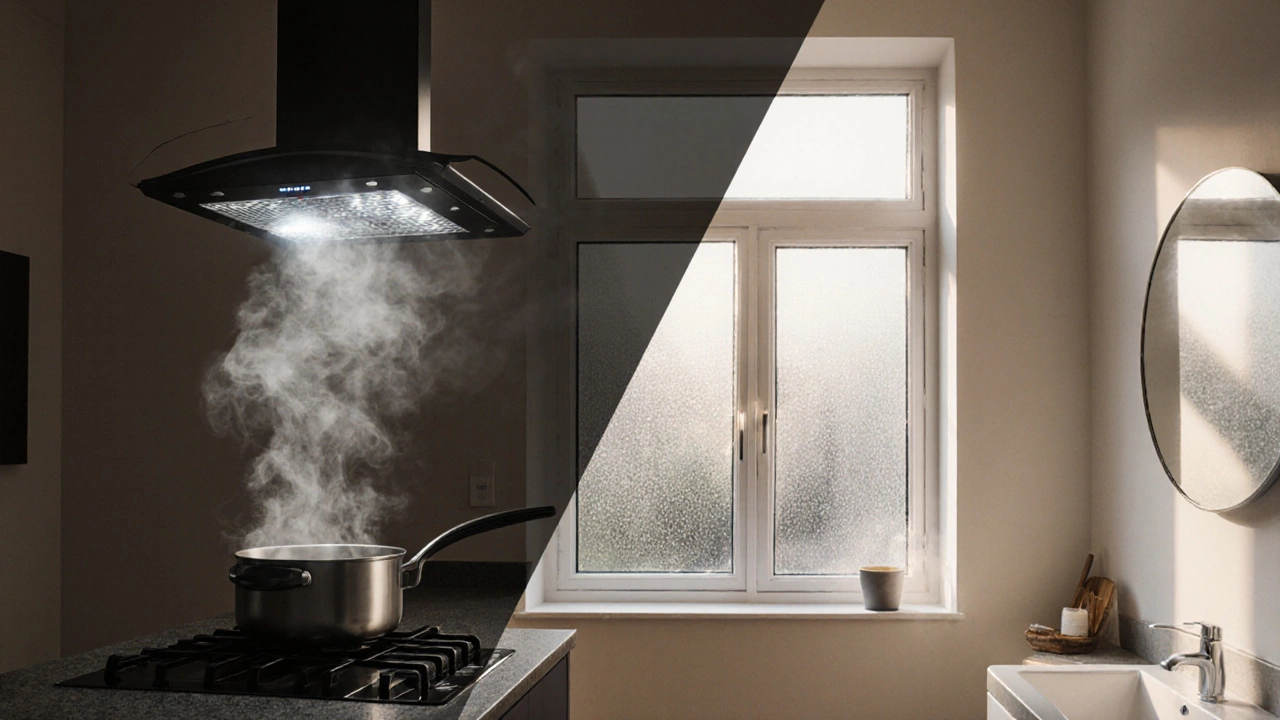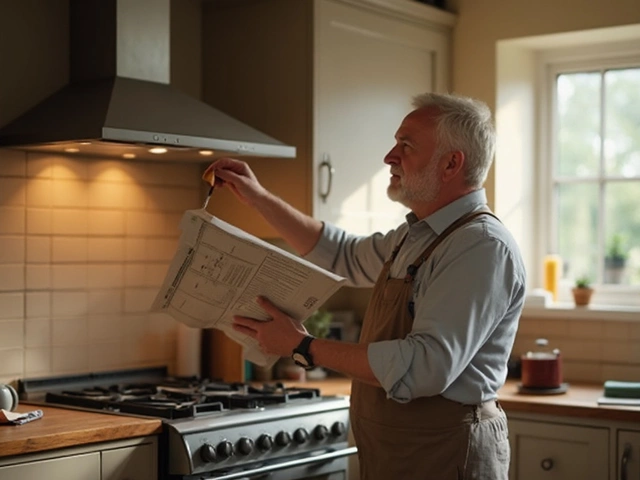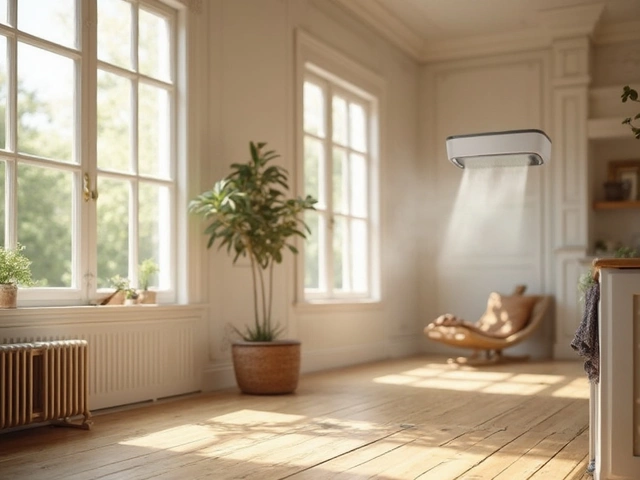Extractor Fan Size Calculator
Enter room dimensions to calculate the required extractor fan size.
Key Takeaways
If you’re wondering whether it’s OK to live without an extractor fan, the answer depends on your home’s layout, local building codes, and how you manage moisture. Proper ventilation prevents mold, protects indoor air quality, and keeps you safe from damp‑related damage. When a fan isn’t installed, you can still achieve good airflow with passive vents, window tricks, or a dehumidifier, but each option has limits.
Below we’ll break down the legal requirements, health impacts, practical workarounds, and signs that you really need a mechanical fan.
Extractor fan is a mechanical device that removes moist or odorous air from rooms like kitchens and bathrooms, pushing it outside the building envelope. It is commonly powered by electricity and is installed in ceiling or wall voids.
Kitchen is a cooking space where heat, steam, and grease are generated during food preparation. The same principle applies to Bathroom where showers and baths create high humidity levels.
Both areas produce Moisture water vapor that can condense on cold surfaces, causing damp and mold growth. When that moisture isn’t expelled, Mold a fungus that thrives in damp environments and can release spores harmful to health. The broader term Indoor air quality (IAQ) measures the cleanliness, freshness, and safety of the air inside a building. Poor IAQ often leads to allergies, asthma flare‑ups, and even long‑term respiratory issues.
In the UK, Building regulations legal standards that dictate minimum safety, energy efficiency, and ventilation requirements for new and renovated dwellings. Part F of these regulations specifically addresses ventilation, stating that kitchens and bathrooms must have either a mechanical extract system or an equivalent passive solution.
When a mechanical fan isn’t feasible, Passive ventilation relies on natural airflow through openings like vents, grilles, or trickle vents. Another tool is a Dehumidifier an appliance that removes excess moisture from the air without moving it outside. Each of these alternatives has pros and cons that we’ll explore.
Do UK Building Regulations Require an Extractor Fan?
For new builds and major renovations, the answer is yes - but with a nuance. Part F (Ventilation) of the Building Regulations 2010 (as amended 2023) mandates adequate means of removing moisture from rooms where it is generated in high quantities. The code offers two routes:
- Mechanical extraction: a dedicated fan that discharges air directly to the outside.
- Equivalently effective passive system: a combination of trickle vents, high‑performance windows, or a balanced ventilation system that meets the same air‑change rates.
If you’re renting an existing flat that predates these requirements, the landlord isn’t automatically obliged to install a fan unless the property is deemed unsafe. However, local councils can enforce improvements if mold or damp becomes a health hazard.
Health Implications of Skipping the Fan
Even if your home technically meets the code through passive means, skipping a fan can still affect health:
- Higher humidity levels: Without active extraction, humidity can stay above 60% after a shower, creating a perfect environment for mold spores.
- Odour buildup: Cooking smells linger longer, which may affect appetite and comfort.
- Airborne pollutants: Grease particles and volatile organic compounds (VOCs) from cleaning products accumulate, irritating eyes and lungs.
- Allergy escalation: Damp‑borne dust mites thrive, worsening allergic reactions.
Public Health England’s 2022 indoor air study linked rooms with inadequate ventilation to a 15% rise in reported respiratory issues among occupants. While the data isn’t definitive for every home, it underscores the importance of moisture control.
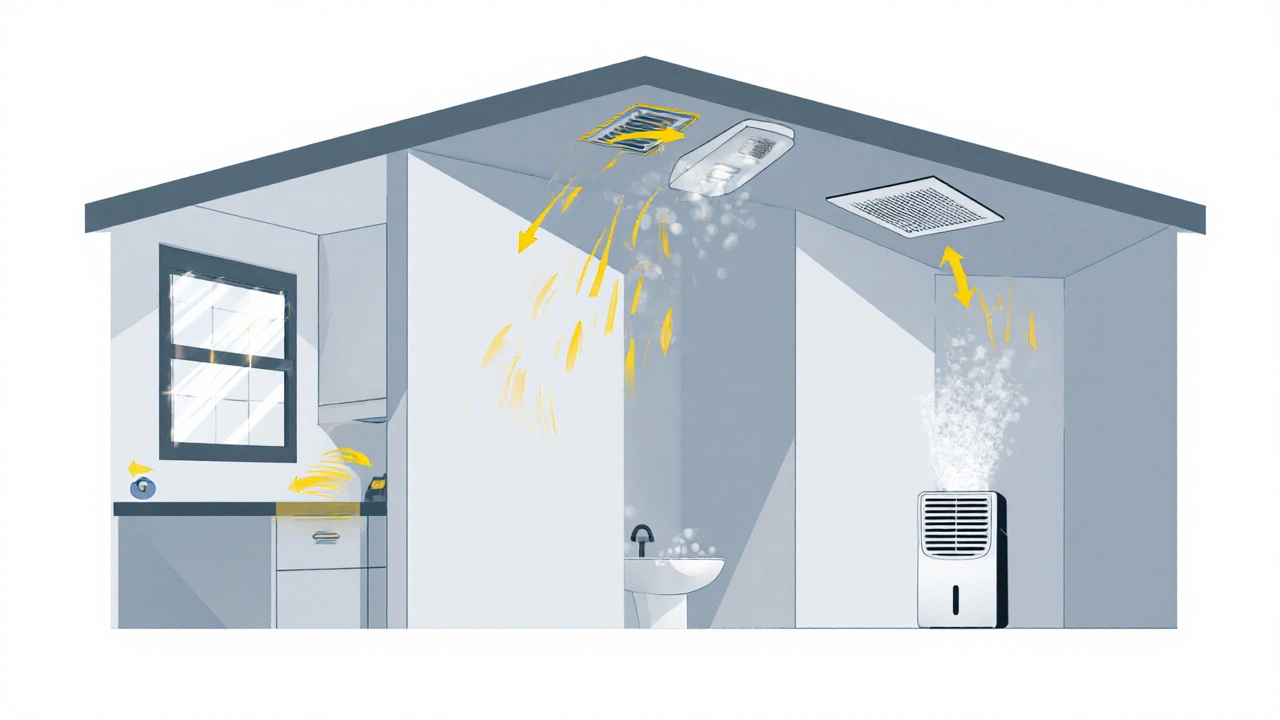
When Passive Ventilation Can Work
Passive solutions are viable if you meet a few conditions:
- The room has at least two openings (e.g., a window and a high‑positioned vent) creating cross‑flow.
- External wind pressure is sufficient - typically homes in breezy locations perform better.
- Walls and roof are well‑insulated to avoid condensation on cold surfaces.
Common passive tricks include:
- Trickle vents: Small adjustable slits in window frames that stay open even when the window is shut.
- Window‑only ventilation: Open a window for 5‑10 minutes after cooking or showering to flush out humid air.
- Ventilation grilles: High‑up wall or roof grilles that let warm, moist air rise and escape.
These methods can keep humidity below 55% in mild climates, but they’re less reliable in colder months when windows stay closed.
Using a Dehumidifier as a Stop‑Gap
A portable dehumidifier can pull moisture from the air without needing a vent. Here’s how to use it effectively:
- Choose a unit sized for the room volume - a 30‑pint model works for a typical 10m² bathroom.
- Run it for 30minutes after a shower or cooking session to bring relative humidity back under 50%.
- Empty the water tank daily or connect a drainage hose if the model allows continuous operation.
While a dehumidifier reduces damp, it won’t remove odours or grease particles, so it should complement, not replace, some form of air movement.
Cost Comparison: Fan vs. Alternatives
| Solution | Initial Cost | Installation | Running Cost (per year) | Effectiveness (moisture removal) |
|---|---|---|---|---|
| Standard extractor fan (120mm) | £45 | £80-£120 (electrician) | £30 (electricity) | High - 15‑20m³/h |
| Trickle vents + occasional window | £20 (per window) | DIY - 1-2hrs | £0 | Medium - depends on wind |
| Portable dehumidifier (30pint) | £120 | DIY - plug‑in | £50 (electricity) | Medium - 10m³/h removal |
Numbers are averages from UK retailers and electrician quotes collected in summer 2025. While a fan has the highest upfront-plus‑install cost, its ongoing power use is modest and it reliably removes both moisture and odours.
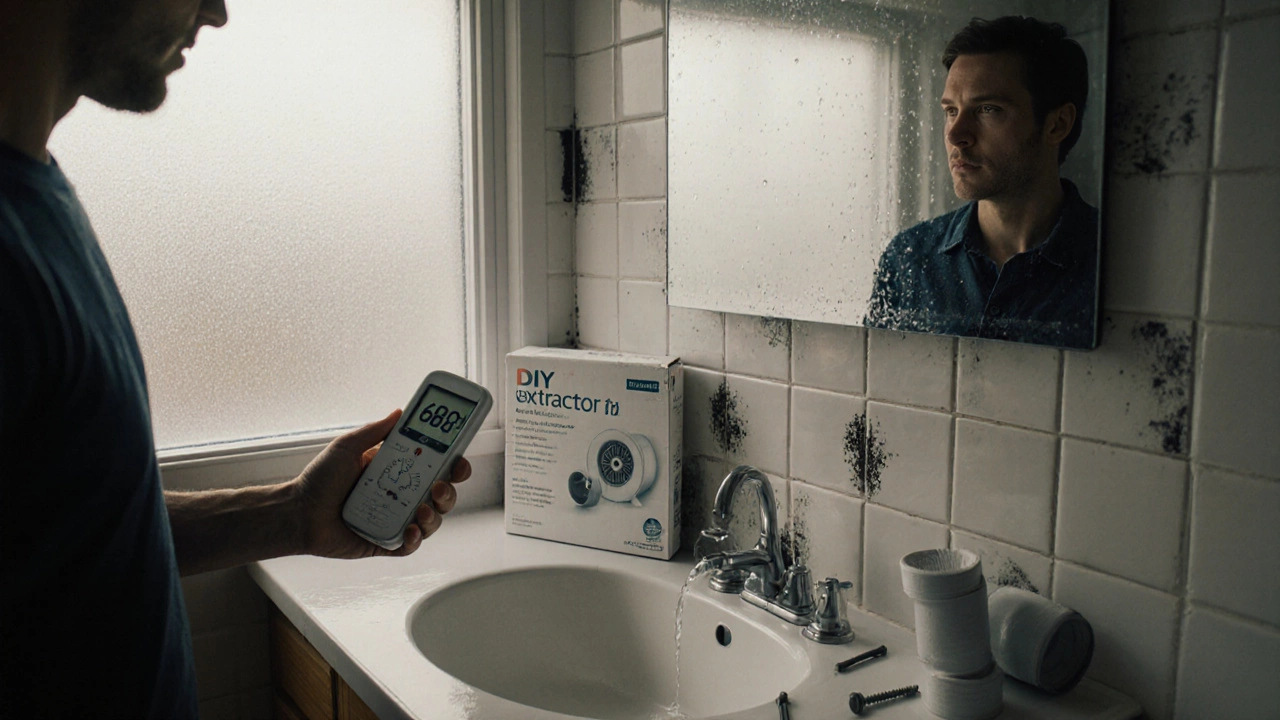
Red Flags: When You Must Install a Fan
If any of these signs appear, you’re better off adding a mechanical extract system:
- Visible condensation on windows or walls after short showers.
- Persistent musty smell that won’t disappear with window airing.
- Visible mold patches (black, green, or white fuzz) on tiles, ceiling, or wood.
- Increased respiratory symptoms among occupants, especially children or elderly.
- Landlord or council insists after an inspection report.
Addressing the issue early saves money on potential structural repairs and protects health.
How to Add an Extractor Fan If You Change Your Mind
Retrofitting a fan isn’t as invasive as you might think:
- Check local regulations: Verify any planning permission requirements in your borough.
- Choose the right size: For most kitchens, a 100‑150m³/h fan is sufficient; bathrooms need around 50‑100m³/h.
- Plan the duct route: Ideally, run the duct straight to the outside through the roof or wall to avoid bends that reduce efficiency.
- Hire a qualified electrician: Working with live wires and venting requires PartP certification.
- Test after installation: Use a hygrometer to ensure humidity drops below 55% after typical use.
Many DIY‑friendly kits include a fan, ducting, and a wall plate for easy mounting.
Bottom Line
Living without an extractor fan can be acceptable if you meet building‑code criteria through effective passive ventilation and keep humidity under control. However, the safest and most hassle‑free route is to install a mechanical fan, especially in high‑use kitchens and bathrooms. If you’re stuck with a fan‑less setup, combine trickle vents, occasional window airing, and a dehumidifier to stay healthy and avoid costly mold damage.
Frequently Asked Questions
Do UK building regulations force me to have an extractor fan?
PartF of the Building Regulations requires adequate ventilation for kitchens and bathrooms. You can meet this either with a mechanical fan or an equivalently effective passive system that provides the same air‑change rates.
Can I rely solely on opening windows?
Opening windows works well in mild weather but loses heat in winter and may not reduce humidity quickly enough. It is best used as a supplement to a fan or a passive vent system.
What size fan do I need for a medium‑sized kitchen?
A fan that can move 100-150m³ per hour is ideal for a kitchen of about 12m². This size handles typical cooking steam and odours without excessive noise.
Will a dehumidifier replace a fan?
A dehumidifier lowers moisture levels but does not remove grease particles or odors. Use it alongside a ventilation strategy, not as a full replacement.
How can I tell if my ventilation is adequate?
Measure relative humidity with a hygrometer. Values staying below 55% after cooking or showering indicate good ventilation. Also watch for condensation on windows and any lingering smells.

